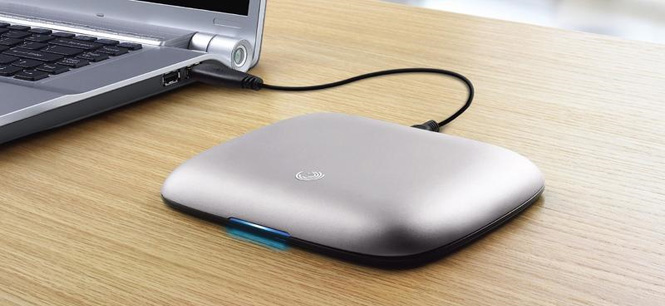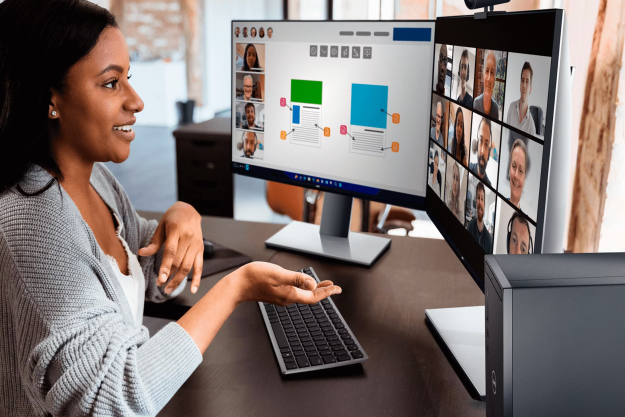
Here’s an unpleasant fact of life: Your computer’s hard drive will eventually fail, taking all your precious digital photos, meticulously ripped music and movies, crucial banking records, email archive, and every other bit of your digital life with it. Looking at the bright side, recovering from such a disaster can be a breeze—provided you have a back-up strategy.
We’ll explore several back-up alternatives, but before we dive into that discussion, we’ll show you a couple of easy ways to monitor your hard drive’s health so a drive failure won’t catch you by surprise. That way, you can move the drive’s contents to another drive before it goes belly up. PC hard drives have this monitoring capability built in—it’s called S.M.A.R.T. (Self-monitoring Analysis and Reporting Technology)—you just need software that can access the information and present it to you in a meaningful way.
Get SMART
S.M.A.R.T. monitors a wide range of attributes, including the drive’s operating temperature, how long the drive takes to spin up (from zero RPM to its fully operational speed), and how many seek errors the drive’s magnetic heads are experiencing (a high number could indicate that the drive’s servo mechanism is failing, among other problems). Don’t worry, you don’t need to be an engineer to understand what S.M.A.R.T. is telling you because the most important attributes will be reported as either “threshold exceeded” ( “drive fail”) or “threshold not exceeded” (drive OK).

If you want to gain a more comprehensive understanding of your drive’s S.M.A.R.T. attributes, take a look at Personal SmartCheck (you can download a free 30-day trial; a full license sells for $19.95). In addition to reporting the raw S.M.A.R.T. attributes, Personal SmartCheck will produce charts and graphs that show how your drive has performed over time. It will also alert you to potential problems, such as a drive operating at a higher-than-typical temperature, with a message that pops up out of your taskbar.
Don’t count on either of these programs to save your bacon. They rely on S.M.A.R.T. for their effectiveness, and S.M.A.R.T. is at best an imperfect system. Besides, it would be foolish to wait for a problem to manifest itself before backing up your drive. Consider S.M.A.R.T. an early-warning system that will allow you to take preemptive action.
On-site Back-up Solutions
When considering a back-up solution, the first decision you need to make is whether you want an on-site solution (meaning your PC and your back-up solution are under the same roof) or an online solution (meaning a service that backs your hard drive to some location on the Internet). An on-site solution is best if you’re hyper-concerned with privacy and in the long run, it’s the cheapest way to go.

If you have a lot of data to back up, you’ll find external hard drives in capacities as high as four terabytes (4,096 gigabytes). These drives plug into your PC via USB, FireWire, or eSATA and often include back-up software, just like the Replica. Some drives, such as Western Digital’s My Book World Edition II, plug into your Ethernet network so you can back up multiple PCs.
We think a home server is an even better on-site solution for households with more than one PC. And while there are free alternatives, such as FreeNAS, for people with the skills to build a server from scratch or who want to repurpose an older PC that might otherwise be discarded, it’s hard to beat Microsoft’s Windows Home Server operating system for ease of use. You can configure Windows Home Server to automatically back up all the hard drives on all the computers on your network. The operating system also includes features a fault-tolerant file-duplication system that automatically duplicates the files stored on it so that you can still recover your data if one of the drives in your server fails.

If you already have an external hard drive that you’re not otherwise using, you can buy the same type of back-up software that Seagate and Western Digital provide bundled with their drives. Acronis’ True Image Home 2009 ($49.99) and Paragon Software’s Drive Backup 9.0 Personal ($39.95) are capable of backing up your operating system, programs, and data, which makes recovering from a disaster a simple matter of booting from a CD or DVD and then restoring the entire image to a new drive. Both companies offer trial versions of their software so you can try before you buy. Looking for a free alternative? 2BrightSparks’ SyncBack FreeWare offers many of the features of its paid software, except for the ability to create an image of your hard drive.
The obvious drawback to on-site back-up systems is that they don’t provide any protection in the event of a fire, flood, or other calamity. Even if you schedule your backups to take place overnight and take the external drive with you when you go to work, your data won’t be protected if catastrophe hits during the night; grabbing a hard drive will be the last thing on your mind as you’re running out of a burning house. That’s where online back-up services come into play. We’ll explore that option in a future article.
Editors' Recommendations
- The new Windows 11 Backup App takes another cue from the Mac
- The best free strategy games for PC
- Built on a fast SSD, LaCie’s computer-free backup drive just got much better


